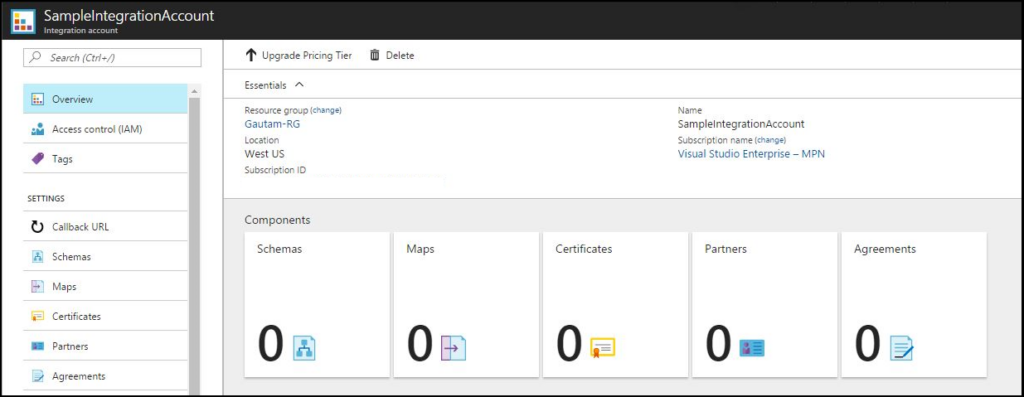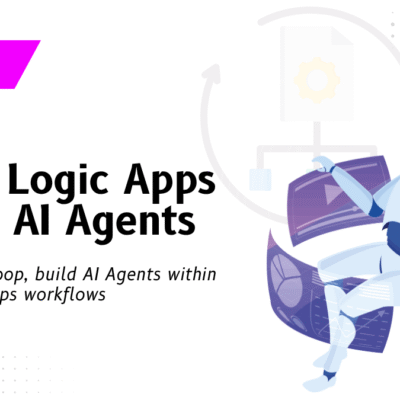B2B EDI Integration Platform as Service in Azure

Introduction
To be successful as a business, enterprise must effectively connect, communicate and manage data exchanged with other organizations such as vendors and business partners. Azure Integration could help with this.
B2B is about enabling business partners to communicate with each other by
· exchanging business data
· in standard format (EDI)
B2B integration is a key to success for many enterprises; in fact, many companies will no longer do business with you if you can’t do business electronically.
One of the standard and most commonly used suite of protocols for B2B data transfer is Electronic Data Interchange or EDI.
Electronic Data Interchange (EDI) is the
· computer-to-computer exchange of business documents
· in a standard electronic format
· between business partners

More than 85% of all electronic business transactions take place using EDI.
In today’s business environment, EDI remains a gamechanger across all industries, including retail, health care, banking, manufacturing, high-tech, and services.
Not only large enterprise companies, but even small and medium company can now build integration platform to handle multiple B2B trading partners and B2B processes on Azure cloud platform. This enables increased agility and decreased time for partner onboarding, while reducing cost and risk.
This post will talk about how can you build B2B/EDI integration platform for your organization with Microsoft Azure Cloud.
What’s an Integration Platform as a Service (iPaaS)
In today’s IT world, data is more important than ever; organizations are heavily relying on the data for future innovation and expansion in the current market. In the journey of digital transformation, applications are spanned over cloud and on premises.
Azure Integration platform as a service (iPaaS) is a set of tools which enables you to connect your enterprise applications that are deployed across cloud and on-premise data center.
iPaaS is often used by large business-to-business (B2B) enterprises that need to integrate on-premises applications and data with cloud applications and data.
According to Gartner,
“Azure Integration Platform as a Service (iPaaS) is a suite of cloud services enabling development, execution and governance of integration flows connecting any combination of on premises and cloud-based processes, services, applications and data within individual or across multiple organizations.”
Typically, an IPaaS platform provides
· Pre-built connectors
o Communication Protocol Connectors (HTTP/REST, SFTP, AS2, etc.)
o Application connectors, including SaaS and on-premises apps
· Flexibility in content types: Ability to handle
o data formats like JSON, XML, and primitives
o data standards like X12, EDIFACT, HL7, etc
· Business rules, maps and transformations
· Workflows to build a business process that orchestrate data and services across cloud and on-premise data center
· Development and solution life-cycle management tools
· Management and monitoring of application flows
In simplest terms, iPaaS is a platform for building and deploying integrations within the cloud and between the cloud and enterprise. With iPaaS, users can develop integration workflows that connect applications residing in the cloud or on-premises and then deploy them without installing or managing any hardware or middleware.
Azure Logic Apps
Azure Logic Apps, is the Microsoft’s core iPaaS product offering. It’s a browser based workflow engine that makes integrating disparate data sources, from cloud to on-premises easy. It provides a way to connect your applications, data, and SaaS application using a rich set of connectors. By connecting various connectors together and using the features of the logic app workflow, you can build a very powerful solution.

These days, businesses are looking for more ways to reduce infrastructure costs without compromising service availability. Serverless integration, which is basically an event triggered integration solution can be the gamechanger in today’s business environment.
Enterprises are turning to Serverless solutions like Azure Logic Apps and Azure Functions to automate workflows and integrate systems, thereby accelerating application delivery and reducing costs. Few key benefits are:
· Lower TCO with the “pay-as-you-use” model
· Easily manage and onboard trading partners using the Azure Portal
· With the Azure Portal, customers will be able to cut down the on-boarding time from weeks to days
· Tracking portal integration with OMS (Operations Management Suite)
Enterprise Azure Integration Pack
With Azure Logic Apps, now we can implement cloud-based enterprise integration workflows for B2B /EDI scenarios. Enterprise Integration Pack (EIP) features in Azure Logic Apps include the B2B, EDI and XML capabilities for handling complex business to business workloads. With this feature, Logic Apps can easily leverage the power of BizTalk Server, Microsoft’s industry leading integration solution to enable integration professionals to build the solutions they need.

The pack uses industry standard protocols, including X12, EDIFACT and AS2 to exchange messages between business partners. Messages can be optionally secured using both encryption and digital signatures.
Azure Integration Account
In B2B communication, the building blocks are trading partners, agreement, schema and certificate.

Enterprise Integration Pack is based on integration accounts, which is a secure and scalable container that stores the various artifacts required for business process workflow such as, schemas for XML validation, maps for transformation, and trading partner agreements.

So, it is essential to create an integration account for a Logic App to use B2B capabilities. This is how the integration account container SampleIntegrationAccount look like.

Integration Account Connector
The Enterprise Integration Pack (EIP) includes connectors which enables you to easily validate, transform and process different messages that you exchange with different applications within your enterprise (EAI) or with your business partners (B2B). With these connectors, Logic Apps can easily leverage the power of BizTalk Server, Microsoft’s industry leading integration solution to enable integration professionals to build the solutions they need.

B2B Features with Integration Accounts
EDI capabilities can be achieved using these connectors, which enables you to receive or send EDI documents using EDI Standards – X12, EDIFACT & AS2

X12 is a standard protocol for inter industry electronic exchange of business transactions—electronic data interchange (EDI).
X12 encode connector validates EDI message and partner-specific properties. It also converts XML-encoded messages into EDI transaction sets in the interchange before sending the EDI message to trading partner. It can also be configured to request for a technical and/or functional acknowledgment.
X12 decode connector also Validates EDI and partner-specific properties, generates XML document for each transaction set. It can also be configured to generate acknowledgment for processed transaction.
EDIFACT
The EDIFACT standard provides a set of syntax rules to structure data for EDI business transaction and is widely used across Europe. Same as X12, EDIFACT connectors also Validates EDI and partner-specific properties.
EDIFACT encode connector serializes the EDI interchange, converting XMLencoded messages into EDI transaction sets in the interchange. It can also be configured to request for a technical and/or functional acknowledgment.
EDIFACT decode connector generates an XML document for each transaction set for incoming EDI messages. It can also be configured to generate acknowledgment for processed transaction.
AS2
AS2 is one of the most popular methods for transporting data, especially EDI data, securely and reliably over the Internet.
AS2 encode and AS2 decode connector can be used to establish security and reliability while transmitting EDI messages. It provides digital signing, decryption, and acknowledgements via Message Disposition Notifications (MDN).
Logic Apps Enterprise Integration Tool
Basically, it adds an integration project type to Visual Studio and lets you create XML schemas, Flat File Schemas, and maps to build an EAI/B2B integration solution. It uses the Logic App Schema editor, Flat File Schema generator, and XSLT mapper to easily create integration account artifacts. These artifacts, XSD and XSLT map files are uploaded to integration account so that you can use them for Enterprise Messaging in Logic App

B2B Integration templates
Logic Apps has rich set of pre-built template including B2B Integration. This can be used to quickly start developing the B2B integration solution.

Tracking and Monitoring B2B Messages
To manage and support the B2B integration, we need the capability to track messages and monitor resources. It’s very important to have the capability to track the message at any time and monitor for failure. Logic apps provide rich tracking and monitoring capabilities with OMS. After your B2B messages are processed, you can view the status and details for those messages.

Diagnostics logging can be set up in integration account. The diagnostic data in OMS gives a very cohesive view of end to end processing of messages. You can view details for a specific message type.
https://www.microsoft.com/en-us/cloud-platform/operations-management-suite

Additionally, you can also build custom activity monitoring dashboards and publish custom queries based on diagnostics sent to Azure Log Analytics.
Wrapping up
In this post, I started with B2B/EDI overview and then discussed about the Microsoft Azure Integration Platform as a Service (iPaaS). Logic Apps the main player for B2B/ EDI integration workflow and can be complemented by other Azure services offerings like service API Management, Service bus etc.
I have also discussed about how to implement the EDI capabilities (AS2, X12 & EDIFACT) using Integration Account connector. Integration account is a secure and scalable container that stores the various artifacts required for B2B/EDI business process workflow such as, schemas for XML validation, maps for transformation, and trading partner agreements. To develop schema and maps we need to use Enterprise Integration Tool which is an extension for Visual Studio. These artifacts are then uploaded to integration account and are used in Logic Apps.
Finally, we discussed the rich tracking and monitoring capabilities for the B2B messages with Operation Management suit.


